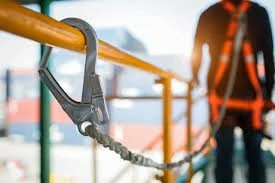


 349,500 Offered Certificates
349,500 Offered Certificates
 24/7 Online Training
24/7 Online Training
 Money Back Guarantee
Money Back Guarantee
 Fully Accredited Courses
Fully Accredited Courses

Created at: 22-02-2025 17:27
When it comes to Working at Heights, weather conditions can significantly affect safety. With unpredictable elements like wind, rain, snow, and icy surfaces, workers face increased risks while performing tasks at elevations. Understanding these conditions is vital for maintaining safety and preventing accidents. This blog will explore how various weather impacts Working at Heights Safety and why comprehensive training is essential.
Adverse weather conditions can introduce numerous hazards when working at heights. Below are some key weather factors and their hazards:
Strong winds can destabilize workers and equipment at heights. Factors include:
Rain can create slippery surfaces, which are hazardous when working at heights. Consider the following:
Snow and ice pose serious risks when working at heights:
Working in extreme heat or cold can also affect safety:
To mitigate these hazards, it’s essential to implement best practices for working safely in various weather conditions:
Proper training is crucial for ensuring Working at Heights Safety. A well-trained workforce can better understand weather impacts on their tasks. Here’s how training can help:
Employers should prioritize comprehensive Working at Heights Training and ensure employees are well-prepared to face the challenges posed by weather. Courses like Working at Heights Course Online offer flexible learning options in understanding hazards, safety measures, and emergency protocols.
For more information about Working at Heights Certification, reach out via [email protected] or visit our website.
Understanding how weather conditions impact Working at Heights Safety is vital for protecting workers. By being aware of risks presented by wind, rain, and ice, employing best practices, and investing in staff training, organizations can significantly reduce accidents and ensure a safer working environment. Don’t leave safety to chance—train, prepare, and succeed.